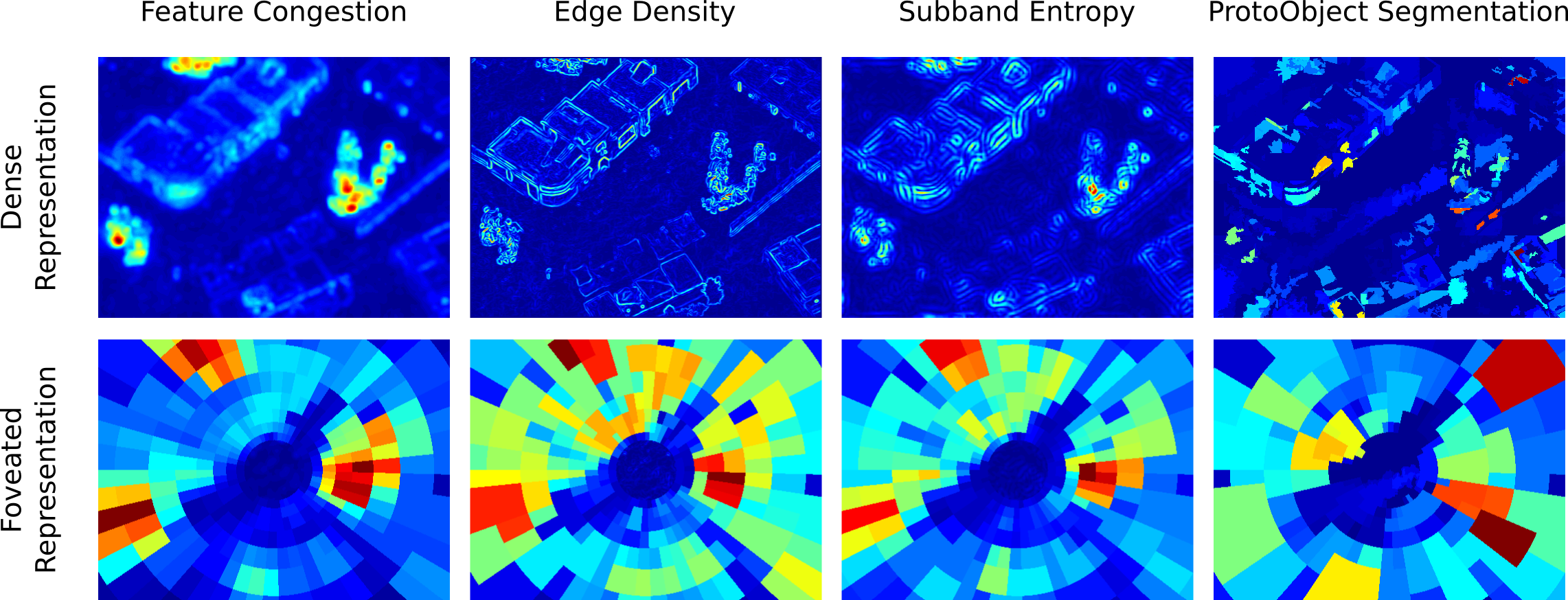Can Peripheral Representations Improve Clutter Metrics on Complex Scenes?
Previous studies have proposed image-based clutter measures that correlate with human search times and/or eye movements. However, most models do not take into account the fact that the effects of clutter interact with the foveated nature of the human visual system: visual clutter further from the fovea has an increasing detrimental influence on perception. Here, we introduce a new foveated clutter model to predict the detrimental effects in target search utilizing a forced fixation search task. We use Feature Congestion (Rosenholtz et al.) as our non foveated clutter model, and we stack a peripheral architecture on top of Feature Congestion for our foveated model. We introduce the Peripheral Integration Feature Congestion (PIFC) coefficient, as a fundamental ingredient of our model that modulates clutter as a non-linear gain contingent on eccentricity. We finally show that Foveated Feature Congestion (FFC) clutter scores r(44) = -0.82 correlate better with target detection (hit rate) than regular Feature Congestion r(44) = -0.19 in forced fixation search. Thus, our model allows us to enrich clutter perception research by computing fixation specific clutter maps. A toolbox for creating peripheral architectures: Piranhas: Peripheral Architectures for Natural, Hybrid and Artificial Systems will be made available.
PDF Abstract NeurIPS 2016 PDF NeurIPS 2016 Abstract
